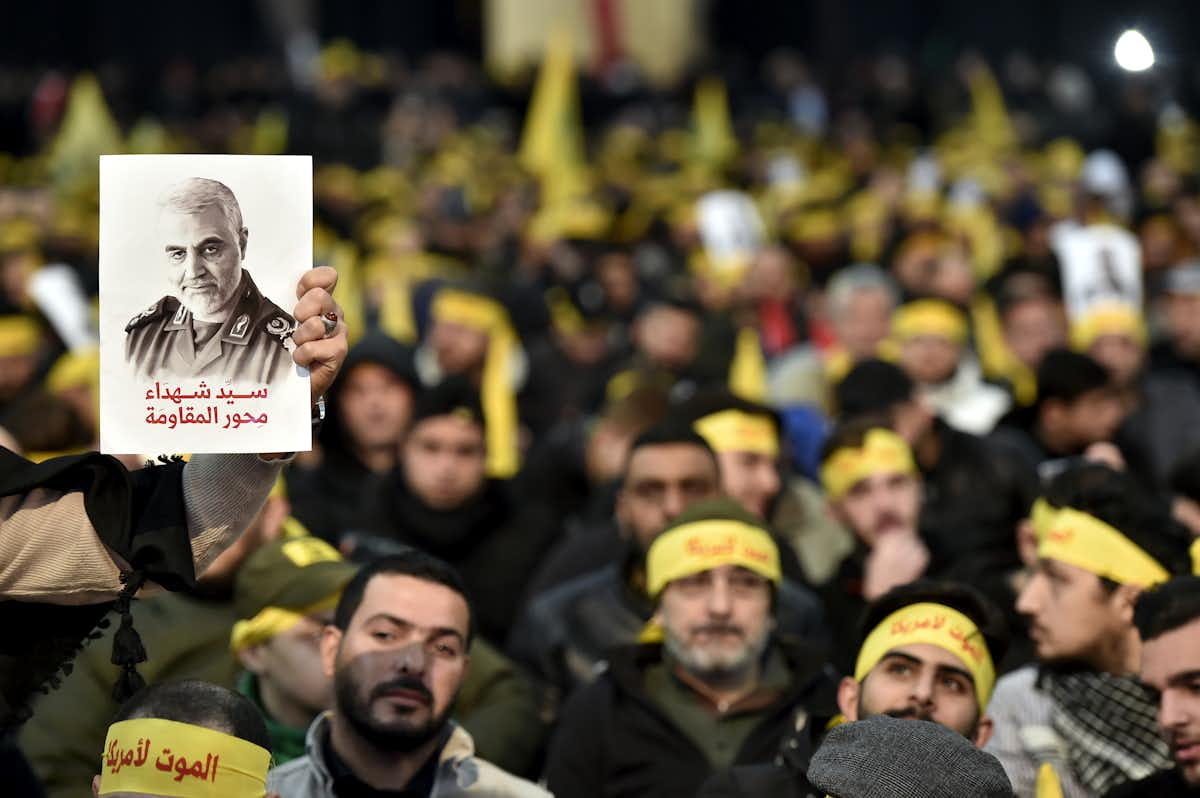
A gamble, a shot in the dark, a risky move. Since the assassination in Baghdad of Qassem Soleimani, the head of Iran’s Quds Force, at the order of US President Donald Trump, speculation has mounted that the ensuing crisis could lead to a regional or international war. After all, #FranzFerdinand was trending on Twitter in a nod to the assassination that triggered the first world war.
Iran’s possible reaction to the killing still sits on a wide spectrum: from restraint and harsh rhetorical bark to a full, military response.
The regime has to meet the demands of two audiences, domestic and international. First, Iran finds itself internationally isolated while fully committed to its Middle East expansionism through its network of proxies. Second, it is facing the worst domestic dissent in decades and spared no expense on quashing protests in late 2019.
No matter what action it chooses to take, Iran will make careful and strategic decisions about what to do next. Much like it deliberately sought strategic gains in 2019 from shooting down a US drone, seizing tankers and attacking Saudi oil infrastructure through the Yemeni Houthi rebels – whose proxy links to Tehran have been documented by the UN – Iran’s response will be equally calculated.
It has already swiftly declared its independence from the nuclear deal, cautious not to shift the current narrative characterising the American strike as a strategic blunder. Soleimani’s replacement, General Esmail Ghaani, also promised a certain, yet patient response to the killing. Iran’s supreme leader Ayatollah Ali Khamenei said the programme of the Quds Force, affiliated to the Iranian Revolutionary Guard Corps “will be unchanged from the time of his predecessor.”
Decades of proxy building
A key set of questions now concerns Iran’s deployment of its proxy power to retaliate against Soleimani’s killing. It could co-ordinate a multi-pronged series of responses from proxies scattered across the Middle East. Or it could combine direct and indirect military action, while also engaging in cyber retaliation.
For decades, Iran banked on the strategy of wars by proxy through a network it labelled the “axis of resistance”. Aimed at curtailing US presence in the Middle East and its regional rivals, chiefly Israel and Saudi Arabia, Iran has been waging a campaign of low-level, surreptitious proxy wars in the Middle East from Iraq to Syria to Yemen and Afghanistan. As my own research has examined, a proxy war is usually a low-level conflict in which states support violent non-state actors militarily, financially and otherwise, with the aim of using these groups as conduits for military action. Simply put, proxy wars are indirect wars which afford deniability, ensure cost-effectiveness and protect against international blowback and condemnation.
Iran’s model emerged from its relationship with Hezbollah, but the Lebanese Shia group has outgrown its proxy status and reached near peer status with the Quds Force. Hezbollah has now become a middle-man helping Iran to train proxy militias, as it did in Syria.

According to analysis by the Soufan Center, Iran’s network now includes the Badr Corps, the Popular Mobilisation Forces, Asa’ib Ahl al-Haq in Iraq, the Palestine Islamic Jihad and Hamas in Palestine, and the Houthis in Yemen. It also includes the the Fatemiyoun Brigade in Afghanistan.
Long-standing Iranian coordination embedded and socialised these militias into a Shia proxy network, but at no point did it chip away at their ability to operate independently. Independent retaliation for Soleimani’s killing from these proxy militias is now therefore also likely. Proxy loyalty does not mean total subservience.
As such, following the US strikes, the availability of proxy militias exposes the possibility of asymmetric Iranian retaliation across the Middle East. How intense their vengeance might be remains the factor to watch, as Iranian calls for crushing revenge currently spark fears of escalation and all-out war.
After Soleimani
But questions have also emerged about whether Iran’s proxy network will survive Soleimani’s assassination, or collapse under a new leadership. There is no doubt Soleimani was central to Iran’s proxy war strategy. It was not just that the Quds Force coordinated, trained, set up and sponsored militias under his leadership. Soleimani was the policy – he was the embodiment of Iranian military expansionism at its most ruthless. No wonder Foreign Policy magazine included him in a list of 2019’s Global Thinkers for security and defence, and US General Stanley McChrystal called Soleimani “Iran’s deadly puppet master”.
As a consequence he was lionised by the militias he socialised as proxies into the Iranian network. This is why proxy wars should be seen not merely as trade offs, but a thought-out strategic bargain in which the parties negotiate and renegotiate the costs, benefits, and consequences of war. His assassination is no doubt a huge blow to the proxy network because it removes the connecting strategic thread that allowed Iran to link Beirut to Sana’a and Damscus to Baghdad and Tehran. In doing so, it simultaneously reveals both the weakness behind the decade-long investment into proxies and also its resilience. As the writer and anthropologist Narges Bajoghli has argued, the relationship between the Revolutionary Guards and Iraqi and Lebanese Shiite armed groups is a long and deep one, leaving the “proxy” institutional infrastructure intact.
The future of Iran’s proxy network will depend not just on the Iranian commitment, but also on the independence of action of these proxies. Some may be drawn even closer to Tehran, others could splinter and defect, while new groups could emerge and embrace the narrative and legacy of Soleimani.![]()
Vladimir Rauta, Lecturer in Politics and International Relations, University of Reading
This article is republished from The Conversation under a Creative Commons license.

